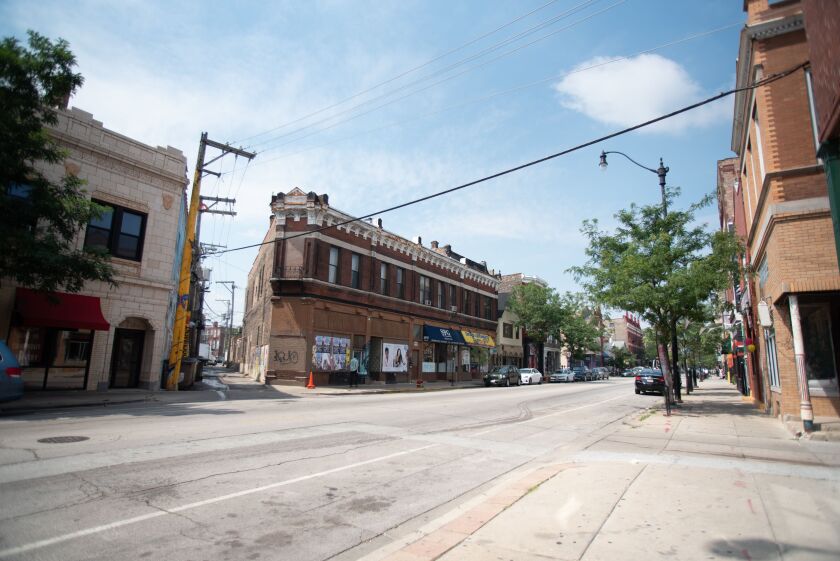Developers who tear down single-loved ones homes or multi-device properties in Pilsen and in neighborhoods alongside the wildly-common 606 trail will be penalized for at minimum two more decades, under an extension innovative Monday right after rave critiques for the pilot.
Approximately a 12 months ago, the Metropolis Council authorized Mayor Lori Lightfoot’s one particular-12 months pilot prepare to impose a $15,000 surcharge for demolishing a “detached property, townhouse or two-flat” and a $5,000-for each-device price for tearing down multi-unit residential buildings.”
Critics accused the town of “stealing equity” from folks who “stuck it out by way of challenging times.” They argued the focused approach would deny residence entrepreneurs their constitutional guarantee to equivalent safety less than the regulation.
On Monday, Housing Commissioner Marisa Novara called the pilot software a smashing achievement and persuaded the council’s Finance Committee to increase the demolition expenses in both of those areas till April 1, 2024.
In the year considering the fact that the expenses had been imposed, there has been an 88% reduction in demolitions around the 606 path and a 25% fall in Pilsen.
Even with fears that a parade of builders would basically consume the comparatively low penalty as the price of executing enterprise, there have been only a few apps for demolition permits in the 606 space and 5 in Pilsen.
Together, the eight apps produced $120,000 in demolition fees.

Searching west on 18th Street in Chicago’s Pilsen community.
“If the reason of the surcharge was to deter some demolitions and, the place we just cannot discourage them, increase some money for inexpensive housing, then it looks to be carrying out some of equally,” Novara said.
The commissioner observed that $120,000 in demolition charges is “not a great deal of revenue.” But, “in the context of the Chicago Neighborhood Land Believe in, which is exactly where these cash go, it is essentially major,” she mentioned.
“It implies another 4 choose-in entrepreneurs can be protected based on that fee,” Novara reported.
Logan Sq. Ald. Carlos Ramirez-Rosa (35th) acknowledged several neighborhoods have witnessed a drop in demolitions for the duration of the pandemic. But the decline was steeper in the pilot locations, he argued.
“That signifies that this ordinance is functioning. It is encouraging to protect in a natural way-occurring reasonably priced housing. It is supporting to defend … our two-to-four-flats, which provide the bulk of our city’s unsubsidized reasonably priced housing,” Ramirez-Rosa stated.
He called it “shocking” that, until eventually now, the city has permitted — and even “incentivized” — builders to demolish “upwards of 10 to 15 percent” of the houses in some neighborhoods.
“There are so lots of vacant loads on the South and West Sides that need to have to be formulated. There is no motive why builders should be coming and knocking down a properly excellent two-to-4-flat in Logan Square or in Pilsen when they could be developing land that is presently vacant,” Ramirez-Rosa reported.
Pilsen Ald. Byron Sigcho-Lopez (25th) pointed out the two-12 months extension operates together with two anti-deconversion ordinances intended to slow gentrification displacing lengthy-time residents of Pilsen and the neighborhoods of Logan Sq., Wicker Park, Humboldt Park and Bucktown that border the 606, formally the Bloomingdale Trail.
Anti-deconversion ordinances “protect density” by generating it harder for owners and developers of assets on specific blocks to flip their multi-unit properties into pricey single-relatives residences.
“The demolition charges … have demonstrated wonderful effects. … In our neighborhood — with really several exceptions of realtors and speculators — the group has viewed, with optimism, that these procedures will help secure … [not only] the density, but also the affordability,” Sigcho-Lopez claimed.
“We can’t tumble into this argument that, in some way, these $15,000 service fees for demolition by some means will influence the little homeowner [for the] worse. This will be beneficial to the tiny property owner or the senior that we’re striving to safeguard.”
Morton Salt concert location gets TIF cash settlements OK’d
The Finance Committee also agreed to expend $3.5 million in tax-increment-funding money for parking, site visitors sign, roadway and pedestrian advancements wanted to pave the way for converting the former Morton Salt drop, 1357 N. Elston Ave., into a 4,000-seat live performance location with its have cafe area.
The famed Morton Salt “umbrella girl” logo will remain, thanks to the landmark position that paved the way for the developers to obtain valuable Course L tax credits.
Also on Monday, the Finance Committee signed off on two settlements: $450,000 to compensate the relatives of a 66-yr-aged man killed in April 2017 right after colliding with an unmarked police vehicle speeding by means of Roseland and $175,000 from a July 2017 crash involving a metropolis staff and a woman left with “severe and long lasting injuries.”

This February photograph exhibits building by now underway for an entertainment venue at the former internet site of Morton Salt on North Elston Avenue. A collection of out of doors summertime concerts will consider spot there afterwards this 12 months.
